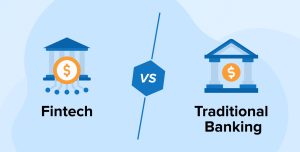In the past, getting a loan required filling out forms, going to the bank, and waiting for days or even weeks. The traditional process can be slow, complicated, and filled with uncertainty. Fintech has revolutionized lending. Online digital lending allows individuals and organizations to apply for and receive a loan in minutes or hours. This change has increased the speed, convenience, and access to credit for more people.
Learn the Basics of Digital Lending:
Digital lending automates the assessment, approval, and disbursement of loans online. Fintech companies have developed systems that automate various tasks performed by bank employees. Personal and financial data can be entered into a website or mobile app and instantly assessed using algorithms and data analytics. The platform assesses the borrower’s credit profile and determines the loan terms based on that data. Once approved, the borrower’s account can be electronically transferred the same day. This approach saves time, reduces paperwork, and eliminates face-to-face interactions.
How Fintech Platforms Assess Borrowers:
It is crucial that digital lending platforms can quickly and efficiently assess a borrower’s ability to repay. Traditional banks base lending decisions on credit scores and income. Fintech companies offer more than just credit reports. They can look at transaction history, payment history, social media habits, and smartphone usage. These additional data points help platforms get a more complete picture of an applicant’s financial situation, allowing them to help people with poor credit but good financial health and responsible behavior.
Automating Loan Processing:
Digital lending benefits from automation. From application to approval and disbursement, software automates the process. The risk of the loan application is assessed by an algorithm based on pre-set rules and data models. If all goes well, the loan is disbursed immediately. Some platforms offer “pre-approved” loans based on past activity. Automation speeds up decision-making and reduces errors in application assessment. Platforms can process large loan applications efficiently without increasing operating costs.
Types of Loans on Digital Platforms:
Fintech companies offer various lending solutions through their digital platforms. Some platforms offer personal loans, small business loans, student loans, auto loans, and mortgages. Personal loans are popular because they can be used for almost anything and often do not require collateral. Quick working capital loans help small businesses manage their cash flow and invest in growth. Digital lending platforms always strive to make their loan products understandable, with clear terms, repayment plans, and interest rates before approving borrowers.
Privacy and Security in Digital Lending:
As with any digital financial business, security in digital lending is a major concern. Fintech institutions protect personal and financial information through encryption, secure login procedures, and data protection regulations. To verify the identity of users and prevent fraud, some platforms require the use of multi-factor authentication. Some platforms partner with cybersecurity companies to monitor transactions and detect unusual activity. Borrowers should always use regulated lending websites and consult privacy policies before providing sensitive information. Responsible digital lenders comply with regulations and are supervised by national financial regulators.
Benefits of Digital Lending for Borrowers:
Modern borrowers are choosing digital lending for its many benefits. The biggest advantage is speed: users can apply for a loan and receive the money in minutes. There is no need to go to a branch or wade through days of paperwork. Applying via smartphone or computer is very convenient in emergencies or for busy people. Many platforms offer flexible repayment options, affordable interest rates, and online payment tracking. Digital loans apply a wider range of credit standards and offer a second chance to borrowers who have been rejected by traditional banks.
Challenges and Risks of Digital Lending:
While digital financing has many benefits, there are also risks and obstacles. Some unreliable online lenders charge exorbitant interest rates or hidden fees. Borrowers should compare different options and read the fine print carefully before accepting a loan. Since everything is happening online, people who don’t have high digital literacy or stable internet access can find themselves in trouble. Fast loans can also lead to bad financial habits, such as borrowing more than you can afford. Avoiding debt requires responsible debt management and financial education.
The Impact of Regulation on Digital Lending:
Digital lending is booming, and governments and financial institutions are closely monitoring these platforms. Regulations are designed to protect borrowers, provide fair lending, and promote transparency. These regulations can include interest rate caps, disclosure requirements, and collection procedures. In some regions, digital lenders must register or obtain a license. These policies promote consumer trust and fairness in the digital lending ecosystem. Fintech companies that meet these standards have more loyal customers and a favorable reputation.
The Fintech Future of Digital Lending:
Digital lending is expected to grow and evolve with the development of new technologies. Artificial intelligence, machine learning, and blockchain are improving the speed, accuracy, and security of lending platforms. Some fintech companies are targeting gig economy workers, remote freelancers, and smallholder farmers, offering specialized solutions. Others are considering cross-border lending or combining digital lending with insurance or investment tools. As the industry evolves, fintech, banks, and regulators will work together to create a more inclusive and efficient lending ecosystem.
Conclusion:
Digital finance enables consumers and businesses to obtain loans faster, more conveniently, and more easily. Fintech companies have revolutionized the lending industry by automating processes, analyzing alternative data, and improving the customer experience. Borrowers benefit rapid rapid approvals, flexible options, and low barriers to entry. You must use digital loans responsibly, understand the regulations, and use platforms that promote security and transparency. As technology advances, digital loans will further increase financial accessibility and inclusion.
FAQs:
1. What is digital lending?
Digital loans involve online loan applications, approvals, and disbursements, without paper documents or in-person meetings.
2. Can digital lenders disburse loans quickly?
Many digital lenders can approve and disburse loans in minutes or hours, depending on the platform and type of loan.
3. Is digital lending safe?
Yes, reputable digital lenders protect user data and transactions through strong encryption, authentication, and compliance measures.
4. Does a favorable credit history require one for digital loans?
Not always. Some systems use alternative information to assess creditworthiness, allowing people with poor credit histories to get a loan.
5. Can I use a digital loan for anything?
You can use most digital personal loans for medical expenses, education, travel, or emergencies, but make sure to check the lender’s rules.




